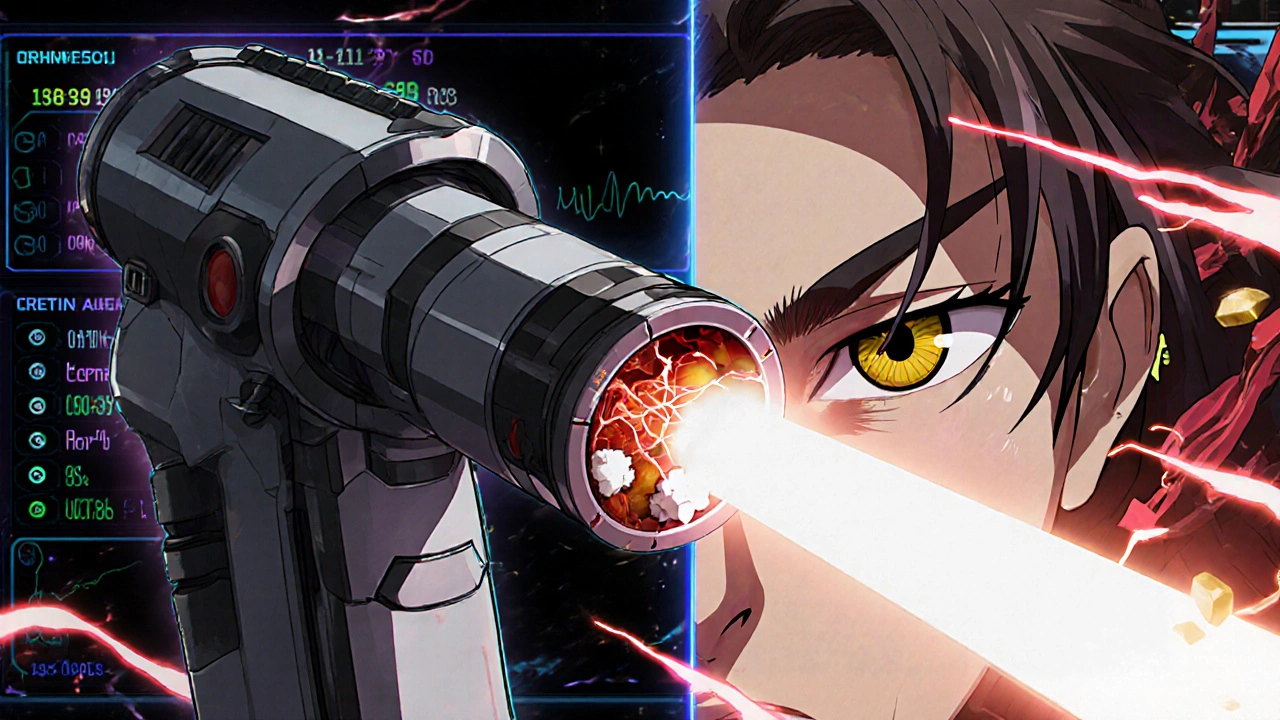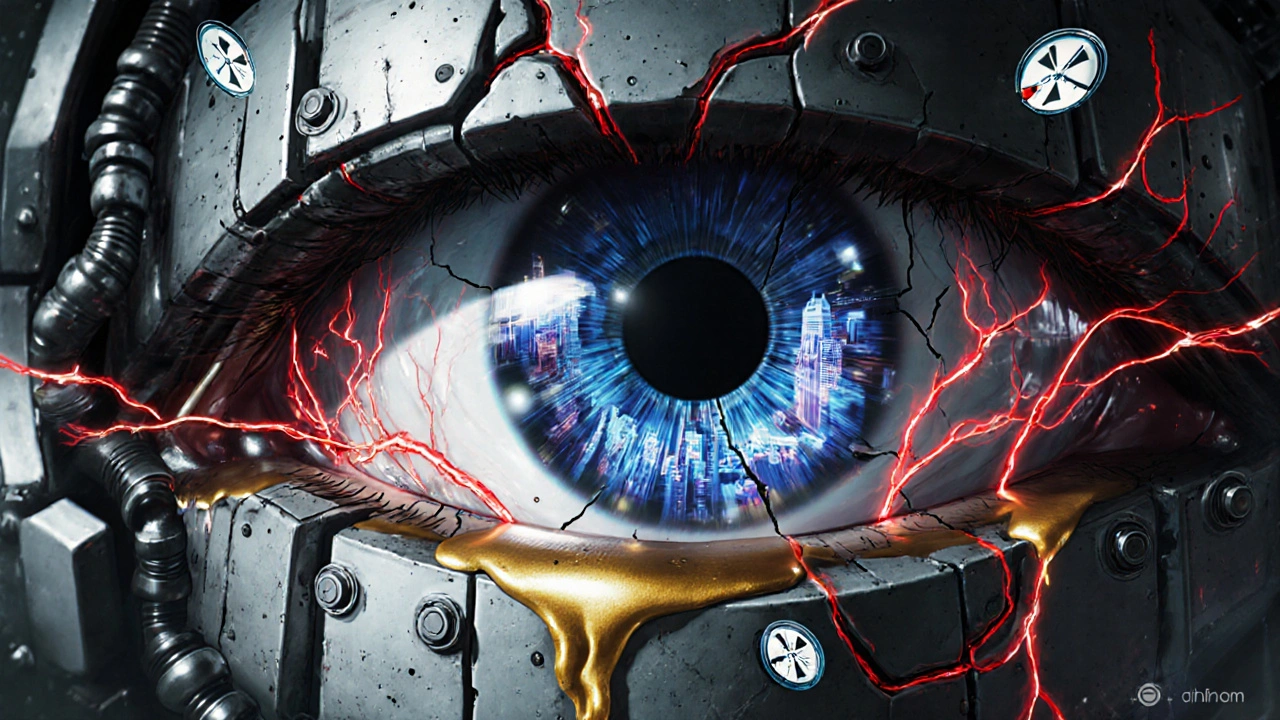What Is Hypertensive Retinopathy?
Hypertensive retinopathy is a condition where long-term high blood pressure damages the tiny blood vessels in the retina, the light-sensitive layer at the back of your eye. It doesn’t cause pain, and you might not notice any symptoms for years-until your vision starts to blur or you see dark spots. By then, the damage may already be advanced.
Think of your retina as a camera sensor. The blood vessels feeding it are like the wiring. When blood pressure stays too high, those vessels get squeezed, thickened, and leaky. Over time, this cuts off oxygen, causes bleeding, and deposits fatty waste in the retina. The result? Blurry vision, blind spots, or even sudden vision loss.
How High Blood Pressure Harms the Eye
Your eyes don’t lie. When your blood pressure climbs above 140/90 mmHg for months or years, the retina shows the signs before other organs do. That’s why doctors call it a "window to your vascular health."
Here’s what happens inside your eye:
- Arterioles (small arteries) narrow by 15-25% as they stiffen from constant pressure.
- When pressure hits 160/100 mmHg or higher, vessels start leaking fluid and blood-creating hemorrhages and "cotton wool spots," which are tiny areas of nerve damage.
- At 180/120 mmHg or above, the blood-retinal barrier breaks down completely. Lipids leak out and form hard exudates-yellowish deposits that distort your central vision.
- If pressure spikes suddenly, the optic nerve swells (papilledema), which can cause rapid, severe vision loss.
According to the NIH, these changes can appear in as little as 3-5 years of uncontrolled hypertension. Even "mild" high blood pressure (130-139 mmHg systolic) can cause damage if it’s been going on for over a decade.
The Four Stages of Retinal Damage
Doctors grade hypertensive retinopathy using the Keith-Wagener-Barker system. It’s simple, reliable, and tells you how far the damage has gone.
| Grade | Key Signs | Typical Blood Pressure | Risk of Stroke |
|---|---|---|---|
| Grade 1 | Mild narrowing of retinal arteries | 140/90 mmHg or higher | 1.5x higher |
| Grade 2 | Arteriovenous nicking (arteries pressing on veins) | 160/100 mmHg | 2x higher |
| Grade 3 | Hemorrhages, cotton wool spots, hard exudates | 180/110 mmHg | 3x higher |
| Grade 4 | Grade 3 signs + swollen optic disc (papilledema) | >180/120 mmHg | 78% higher |
Grade 4 is a medical emergency. It’s not just about your eyes-your heart, kidneys, and brain are under severe stress. Patients with Grade 4 retinopathy have a 78% higher risk of stroke and often have kidney failure or heart damage too.
Why You Might Not Know You Have It
Here’s the scary part: 68% of people with early-stage retinopathy (Grade 1-2) feel nothing. No pain. No blurry vision. No warning.
One patient from Cleveland Clinic described waking up with dark spots in her central vision after her blood pressure hit 210/110. She thought it was just tired eyes. It took three weeks to get an appointment. By then, she had permanent damage.
Another Reddit user, u/RetinaWarrior, wrote: "I had double vision and headaches for months. My GP said it was stress. My optometrist found Grade 3 retinopathy. My BP was 195/115. I almost lost my sight."
Most people don’t connect vision changes to high blood pressure. Only 15% of patients suspect the link without a doctor telling them. That’s why routine eye exams are critical-even if you feel fine.

How It’s Diagnosed
Your eye doctor doesn’t need fancy machines to spot early signs. A simple fundoscopic exam with an ophthalmoscope can reveal narrowed arteries or tiny hemorrhages.
But technology is catching up fast:
- Optical Coherence Tomography (OCT) shows retinal thickness changes and fluid buildup-increases of 10-15% in advanced cases.
- AI-powered imaging, like IDx-DR and RetinaCheck AI (FDA-cleared in 2022), can detect retinopathy with 92% accuracy, compared to 75% for human eyes alone.
- RetiFlow, a new non-invasive device from Phase 3 trials (2023), measures capillary blood flow without dye injections-94% accurate versus traditional angiography.
These tools are now being used in primary care clinics. In 45% of ophthalmology practices, AI helps flag patients who need urgent follow-up.
Can Vision Be Restored?
Yes-but only if you act fast.
When systolic blood pressure drops by 25 mmHg within 48 hours, 65% of acute retinal changes improve. Hemorrhages clear. Exudates shrink. Vision gets sharper.
But timing matters:
- Within 7-10 days of BP control: Vision starts improving.
- After 3-6 months: Macular damage may recover partially.
- After 12+ months without treatment: Permanent scarring sets in.
Studies show 22% of patients with Grade 3-4 retinopathy still have permanent vision loss-even after perfect BP control. The longer you wait, the less chance you have to recover.
How to Protect Your Eyes
There’s no magic pill. The only proven treatment is controlling your blood pressure.
Here’s what works:
- Get your BP checked monthly. Home monitoring is key. Use a validated upper-arm cuff. Record readings for your doctor.
- Take your meds as prescribed. Studies show 70% adherence improves when patients link their eye health to their meds.
- Get an annual eye exam. If you have Stage 2 hypertension (≥140/90), get one every year. If you have resistant hypertension (BP still high on 3+ drugs), get one every 6 months-new AHA guidelines say so.
- Choose the right meds. ACE inhibitors reduce retinal damage progression by 32% compared to calcium channel blockers, according to the European Society of Cardiology (2023).
- Don’t ignore symptoms. Blurry vision? Dark spots? Sudden headaches? Don’t wait. Go to an eye doctor or ER if your BP is over 180/120.
Patients who join programs like the American Heart Association’s "Check. Change. Control." see 35% better BP control-because they understand their eyes are telling them something.

Who’s at Highest Risk?
Not everyone with high blood pressure gets retinopathy. Genetics, lifestyle, and other conditions play a role:
- Diabetics: If you have both diabetes and hypertension, your risk of permanent vision loss is 4.7 times higher.
- Black adults: Higher rates of severe hypertension and delayed diagnosis increase risk.
- People over 60: Vessels naturally stiffen with age-hypertension accelerates this.
- Smokers and obese individuals: These add extra strain on blood vessels.
NIH is now running the RETINA-HTN study (2023) to find genetic markers that predict who’s most vulnerable. Early results point to 37 gene variants that could help target screening.
What Happens If You Ignore It?
Ignoring hypertensive retinopathy isn’t just risking your vision. It’s risking your life.
Retinal damage is a red flag for heart attack, stroke, and kidney failure. A 2023 study found that people with Grade 2 or higher retinopathy had a 2.5x higher risk of cardiovascular death over the next 10 years.
And here’s the kicker: once you have Grade 4 retinopathy, your chances of surviving the next year drop by 40% if your BP stays uncontrolled.
This isn’t a slow, silent disease. It’s a warning siren-and your eyes are the alarm system.
Final Takeaway: Your Eyes Are Listening
You can’t see high blood pressure. But your eyes can. And they’re telling you something urgent.
If you have high blood pressure-even if you feel fine-get your eyes checked. Don’t wait for blurry vision. Don’t wait for headaches. Don’t wait for a crisis.
One eye exam could save your sight. And maybe your life.
